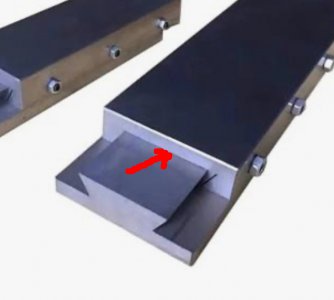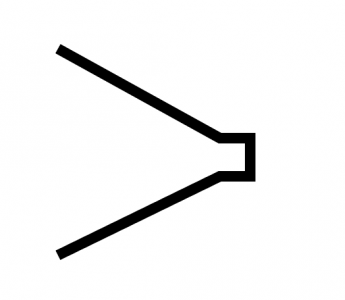Lathe ways fascinate me. My understanding:
The primary design requirement for a machine way is usually to allow movement in only
one of six degrees of freedom, preventing movement in all others. Secondary design goals include ease of manufacturing, ease of maintenance, longevity (durability to avoid wear), and ease of assembly among other things.
Let's ignore the compound and tailstock on a lathe and focus on the cross-slide for a moment.
For a lathe cross-slide, the six degrees of freedom are:
- Translation along X (the only desired cross-slide movement, toward and away from the operator)
- Translation along Y (floor-to-ceiling movement, never desirable except for milling operations on a lathe)
- Translation along Z (along the bed ways — only provided by carriage/saddle movement, undesirable for the cross-slide itself)
- Rotation around X (cross-slide roll: side to side tipping — undesirable)
- Rotation around Y (cross-slide yaw: like the back end of a car sliding on ice — undesirable)
- Rotation around Z (cross-slide pitch: fore and aft pitching like a car going up and over a hill — undesirable)
Regarding your second question, the saddle itself is only supposed to move linearly in Z (item 3 above).
Note that the cutting forces are almost always within the extremities of the bed ways (and the saddle + cross-slide + compound has a lot of mass, so gravity is working in your favor).
Some lathe beds (Atlas, for example) have box ways (vertical and horizontal surfaces only). If the sides of box ways wear, some sort of adjustment in the saddle is usually required to take up the slack (else you could get translation in X or rotation around Y). Gravity and cutting forces are constant, though, so even wear on the top of box ways isn't a concern (the saddle just sits lower).
Some lathes (e.g. Hardinge and clones) have a single dovetail way with a large top bearing surface and angled dovetails to prevent pitch around Z, and translation and rotation in X and Y. Note that unlike most cross-slides and compounds, the top of the male bed dovetail on a Hardinge HLV-H
IS a primary bearing surface. Both the saddle and the tailstock ride on this massive hunk of metal (which is one reason these are such rigid lathes).
Most other lathes have at least one prismatic ("vee") way. Prismatic ways constrain yaw around Y or linear translation in X without the need for adjustment (the saddle just tends to sit lower if things wear evenly). Gravity and cutting forces generally eliminate pitch around Z, as well linear translation and rotation in Y (though clamps that ride under the ways are still there for crashes and the like).
Since the bed is the largest part and heaviest part of a lathe, all of these shapes are relatively easy to manufacture and re-grind/re-scrape. Even with dovetail beds, it's only the smaller saddle and cross-slide that have relatively inaccessible surfaces to grind/scrape.
Regarding your first question, a cross-slide (for example) is only supposed to translate along X (item 1 above).
The cross-slide is smaller and shorter,
and the cutting tool almost always overhangs the bearing points, so gravity and inertia
aren't working in your favor and lifting forces are much more of a concern. Thus dovetails are typically necessary: you need to prevent lifting and twisting during normal operation.
With cross-slides though, the top of the saddle is usually a male dovetail, and the cross-slide itself is female. The top of the male portion is typically
NOT a bearing surface (as
KKrum points out), instead it's the "feet" of the cross-slide that bear. Those surfaces on both the saddle and the cross-slide receive the most wear from cutting forces, but are fairly accessible and easy to grind/scrape. The left "foot" also helps to prevent roll along X as it is farther "outboard" than the top of the dovetail.
The internal angled dovetail portions in the cross slide are more of a pain to repair (usually involving handscraping rather than a power scraper). They see less uneven wear, though, as the cutting forces from turning and facing are typically more downward than toward the tailstock.



